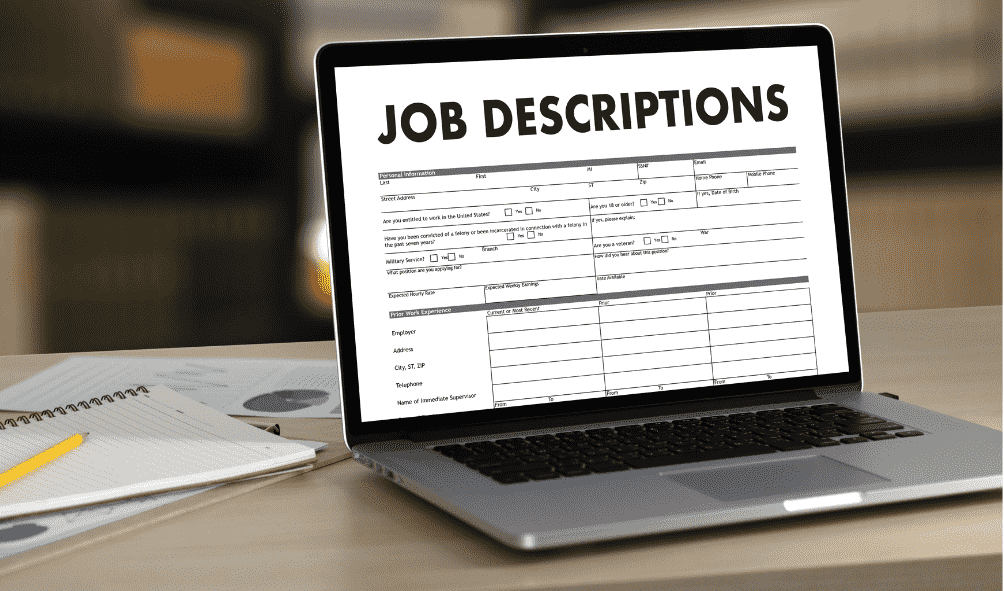For any organization, the hiring process is critical. A company’s ability to succeed may be greatly impacted by its ability to locate and acquire the proper people. On the other hand, using standard hiring techniques may be expensive and time-consuming, and they frequently result in mistakes in hiring and lost chances. The epidemic has changed the labor market and raised competition levels. If you don’t have swift recruiting tactics, you could have to settle for fewer qualified applicants or put up with a protracted job hunt.
We’ve come up with seven useful hiring process acceleration methods to assist you traverse this difficult terrain. By putting these strategies into practice, you can expedite the hiring process, shorten the time it takes to find a candidate, and make sure you get top talent before your rivals.
Understanding the Current Hiring Process

Assessing Your Current Hiring Timeline
Before you can improve your hiring process, it’s essential to understand its current state. Assessing your current hiring timeline involves breaking down each step of the process from job posting to final hire.
- Job Posting: How long does it take to draft and publish a job posting?
- Application Review: What is the average time spent reviewing resumes and applications?
- Interview Scheduling: How long does it take to schedule and conduct interviews?
- Decision Making: What is the time frame for making a hiring decision and extending an offer?
A detailed timeline provides a clear picture of where delays occur and helps identify areas for improvement.
1. Leverage Technology for Applicant Tracking
![]()
Your hiring process may be made much more efficient by putting in place an Applicant Tracking System (ATS). Many manual operations, like tracking candidates throughout the recruiting cycle and sorting resumes, are automated using an applicant tracking system (ATS). Reducing the possibility of losing top talent to delays is possible with consolidated data and strong analytics that make it simple to track each applicant’s progress. Furthermore, by giving prompt updates and eliminating the back-and-forth that frequently occurs while setting up interviews, an applicant tracking system (ATS) helps expedite contact with prospects.
Benefits of an ATS
- Automated Resume Screening: Applying pre-established criteria, an applicant tracking system (ATS) may automatically filter resumes, cutting down on the amount of time needed for the preliminary assessment of candidates.
- Centralized applicant Database: This simplifies the tracking and management of applications by storing all applicant data in one location.
- Improved Communication: A lot of applicant tracking systems come with communication features that make working with applicants easy.
- Data and Analytics: An applicant tracking system (ATS) offers comprehensive data and reports that assist in identifying areas of concern and areas for improvement.
2. Create Clear Job Descriptions

The secret to drawing in the best applicants and shortening the recruiting process is a well-written job description. Applications from unqualified candidates are decreased when job roles, responsibilities, and requirements are made clear in clear and comprehensive job descriptions.
Components of an Effective Job Description
- Job Title: Clear and precise, reflecting the role accurately.
- Summary: A brief overview of the position and its importance within the company.
- Responsibilities: A detailed list of day-to-day tasks and long-term projects.
- Qualifications: Specific requirements such as education, experience, skills, and certifications.
- Work Environment: Information about the work setting, hours, and any travel requirements.
- Salary Range and Benefits: Transparency about compensation and perks can attract serious candidates.
Benefits of Clear Job Descriptions
- Attracts Qualified Candidates: Reduces the number of irrelevant applications.
- Sets Clear Expectations: Helps candidates understand what is expected, reducing misunderstandings.
- Streamlines Screening: It is easier to identify candidates who meet the criteria.
3. Easy Interview Processes

Hiring processes are more smoothly when interview questions are standardized. It facilitates the comparison of candidates’ responses and credentials by guaranteeing that everyone is reviewed equally and consistently.
Benefits of a Structured Interview Process
- Fairness: All candidates are asked the same set of questions, reducing bias.
- Efficiency: Interviews are more focused and time-efficient.
- Comparability: Easier to compare candidates’ responses against each other.
4. Utilize Pre-Employment Assessments

Pre-employment tests are useful instruments for determining a candidate’s talents, disposition, and mental capacity prior to hiring. Time and money may be saved by using these tests to help weed out unfit applicants early in the process.
Skills Tests
- Technical Skills: Tests specific to the job role, such as coding tests for developers or writing tests for content creators.
- Soft Skills: Assessments for communication, teamwork, and problem-solving abilities.
Personality Assessments
- Myers-Briggs Type Indicator (MBTI): Helps understand personality traits and how they might fit into your team.
- Big Five Personality Test: Evaluates five major personality dimensions – openness, conscientiousness, extraversion, agreeableness, and neuroticism.
Integrating Assessments into the Hiring Process
Integrating pre-employment assessments into your hiring process can help streamline candidate evaluation and ensure you’re making informed decisions.
Choosing the Right Assessments
- Relevance: Select assessments that are directly related to the job requirements.
- Validity: Ensure the assessments are scientifically validated and reliable.
Benefits of Pre-Employment Assessments
- Objectivity: Provides objective data on candidates’ abilities and fit for the role.
- Efficiency: Reduces the time spent on interviewing unsuitable candidates.
- Improved Quality of Hire: Helps identify the best candidates based on their skills and potential.
5. Improve Communication and Coordination

Maintaining a candidate’s interest and making sure the hiring process goes smoothly depends on effective communication. The time it takes to move applicants through the recruiting phases may be greatly decreased by having clear and timely communication.
Using Automated Emails and Updates
- Application Confirmation: Automatically send an email confirming receipt of the application.
- Status Updates: Keep candidates informed about their application status and next steps.
- Interview Reminders: Send automated reminders for scheduled interviews.
Tools for Effective Candidate Communication
- Email Automation Tools: Platforms like Mailchimp or HubSpot can automate and personalize email communications.
- Recruitment CRMs: Tools like Beamery or Yello help manage candidate interactions and track communication history.
- Chatbots: Implement AI chatbots on your career site to answer FAQs and provide real-time assistance to candidates.
Benefits of Enhanced Communication
- Candidate Engagement: Keeps candidates engaged and interested in the position.
- Transparency: Builds trust by keeping candidates informed about the hiring process.
- Efficiency: Reduces the need for manual follow-ups and repetitive communication tasks.
6. Build a Talent Pipeline
Building a talent pipeline involves proactive sourcing of candidates even before positions become available. This approach ensures that you have a pool of qualified candidates ready to fill roles quickly, reducing the time-to-hire.
Engaging with Potential Candidates
- LinkedIn Networking: Regularly engage with potential candidates on LinkedIn by liking and commenting on their posts and sending personalized connection requests.
- Talent Pools: Create and maintain a database of potential candidates who have shown interest in your company or have been referred by employees.
- Career Fairs and Events: Participate in career fairs, industry conferences, and networking events to meet potential candidates.
Using LinkedIn and Other Platforms
- LinkedIn Recruiter: Utilize LinkedIn Recruiter to search for candidates based on specific criteria, send InMail messages, and manage candidate pipelines.
- Job Boards and Forums: Regularly post on industry-specific job boards and forums to attract niche talent.
- Employee Referrals: Encourage employees to refer potential candidates and offer incentives for successful hires.
7. Optimize Onboarding Processes

The onboarding process can begin even before a new hire’s first day, known as pre-boarding. Pre-boarding helps new employees feel prepared and welcomed, setting a positive tone and reducing time-to-productivity.
Sending Welcome Emails and Necessary Paperwork
- Welcome Emails: Send a personalized welcome email with a warm message, an overview of what to expect on the first day, and any necessary information.
- Paperwork: Provide digital forms for new hires to complete before their start date, such as tax documents, direct deposit forms, and any other necessary HR paperwork.
- Introduction to Team: Include a brief introduction to key team members and their roles.
Setting Up Systems and Access
- IT Setup: Ensure that all necessary hardware, software, and access credentials are ready and waiting for the new hire.
- Workspace Preparation: Prepare their workspace, whether it’s an office desk, remote setup, or hybrid environment, including any required equipment and supplies.
- Training Materials: Provide access to any training materials, employee handbooks, and relevant documents ahead of time.
General Tips for a Faster Hiring Process
Setting clear expectations and deadlines is essential for maintaining a swift and efficient hiring process. Clear timelines help keep both the hiring team and candidates on track, reducing delays and improving overall efficiency.
Importance of Deadlines in the Hiring Process
- Accountability: Deadlines create a sense of urgency and accountability among hiring team members.
- Candidate Experience: Clear timelines enhance the candidate experience by keeping them informed and reducing anxiety.
- Decision Making: Timely decisions prevent the loss of top candidates to competitors who may move faster.
Communicating Timelines to Candidates and Hiring Teams
- Job Postings: Include expected timelines for each stage of the hiring process in the job posting.
- Regular Updates: Keep candidates informed about their status and any changes in the timeline.
- Internal Meetings: Set clear deadlines for each stage of the process during internal hiring team meetings.
Conclusion
At Hire Elite Consultants, we understand that a swift and effective hiring process is crucial for acquiring top talent and maintaining a competitive edge. By implementing structured assessments, leveraging technology, and streamlining interview processes, we help organizations achieve their hiring goals efficiently. Our expertise in crafting detailed job descriptions, enhancing communication, and proactive talent sourcing ensures that you attract and retain the best candidates. Additionally, our focus on continuous improvement and effective onboarding further optimizes the recruitment journey. As your partner, we are committed to refining and accelerating every stage of your hiring process, ensuring you bring in qualified professionals who align perfectly with your company’s values and objectives. Let us help you build a more robust, agile recruitment strategy that meets your needs and supports your organizational growth.

